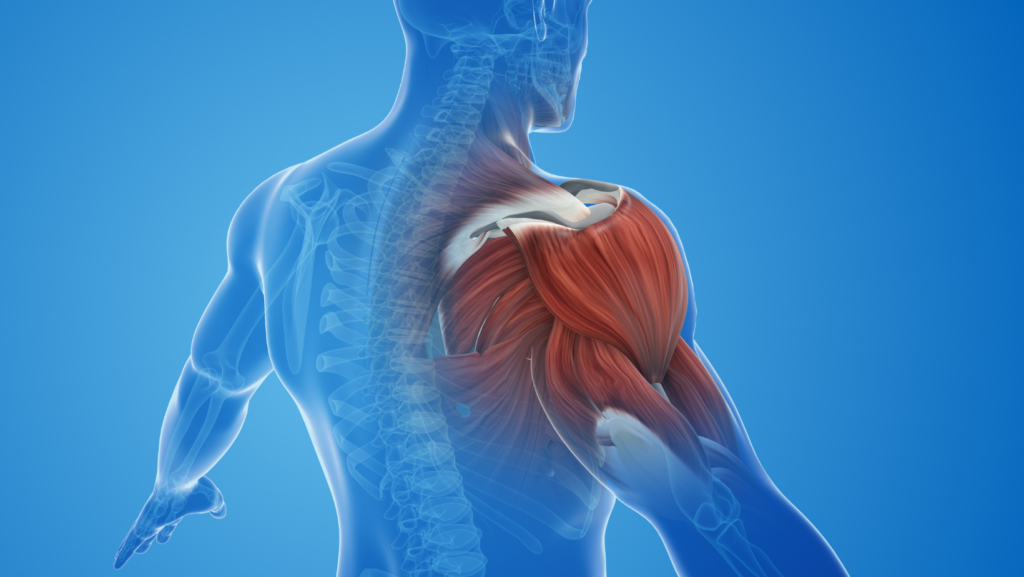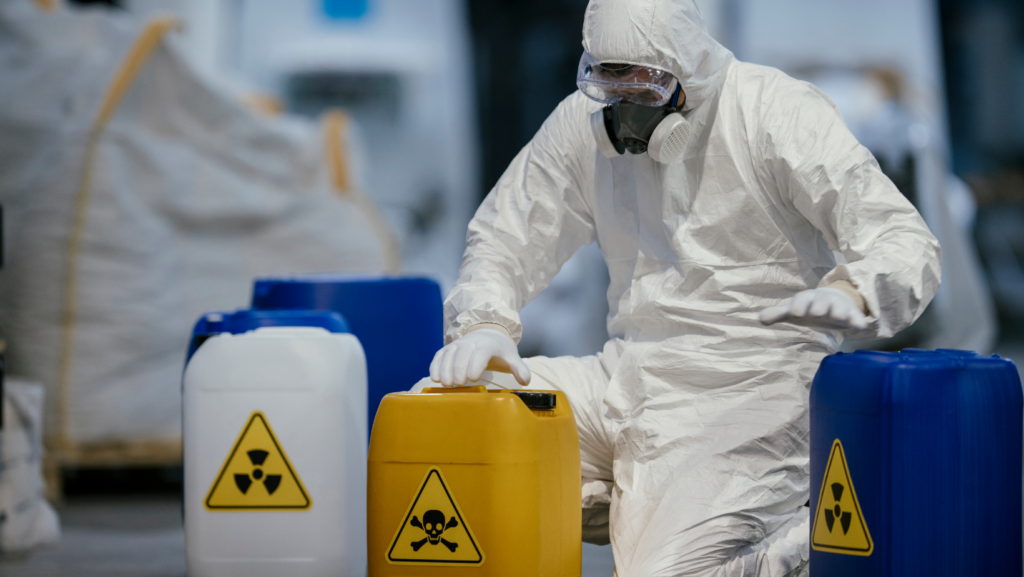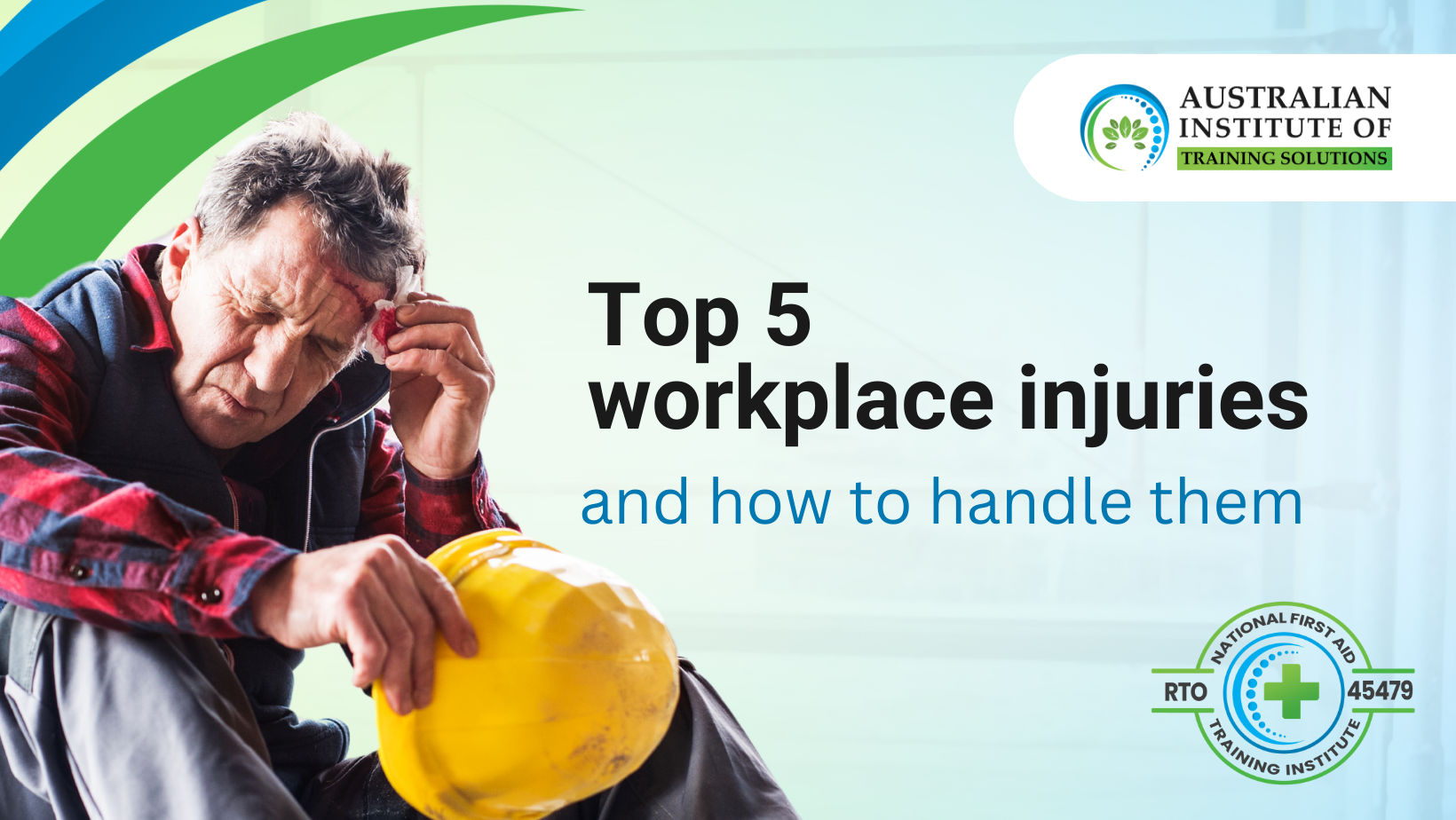Have you ever wondered what the most common workplace injuries are?
No matter what environment you work in, be it a corporate office, a school setting, a restaurant or even a building site, anything can happen at any time and it’s always better to be prepared.
How ready would you be if any of the following incidents were to occur?
1) Slips, trips, and falls
Whether it’s a freshly mopped floor in a café, loose brickwork in the courtyard pavement or a temporary re-shuffle of desks, slips and falls can occur all too easily without the right footwear or awareness.
Additionally, minor issues have the potential to become major hazards if they aren’t addressed quickly (e.g. a spilled liquid left unattended, or a chair sticking out of place).
Slips and falls can lead to sprains, fractures, and even concussions, all of which require attention and careful monitoring to manage.

2) Overexertion injuries
Those who work as a cleaner, a night fill worker, or even in a post office may need to lift, carry and move heavy objects regularly. Mining and fitness industries can also run into this type of injury frequently.
One major cause of overexertion injuries is Repetitive Strain Injury (RSI), which occurs when muscles, tendons, or nerves are damaged from repetitive use or overuse.
Common causes include activities that require you to work in an awkward position, poor posture (very common with desk jobs) and repetitive tasks such as typing or hairdressing.
When muscle injuries and strains occur, it may require bandaging and compression to aid recovery.
3) Struck by objects
Unsecured items, be it on a building site full of tools or in a creative studio containing props, can result in certain objects falling or slipping. This can lead to all sorts of injuries, including cuts, fractions, falls, or even foreign objects in the eye.
Cuts, lesions and especially lacerations need to be sterilised and bandaged appropriately, depending on the depth and severity of the wound, so it’s always good to know how to treat each type of injury in an emergency.
Concussions are also important to watch for when these types of incidents occur. Left untreated, a concussion can lead to ongoing symptoms and issues such as balance problems, light sensitivity, fatigue or even changes in the brain.
You may also like: How to treat different types of wounds

4) Exposure to harmful substances
Chemicals, fumes, or hazardous materials can all cause injuries such as poisoning, nerve damage, lunge damage, or lead to illnesses such as cancer.
Risk of encountering these injuries is higher if you work in medical, nursing care, mining and engineering fields, to name a few.
If exposed to harmful substances such as radioactive materials, harsh chemicals, hazardous waste or sharps, it’s important to follow best practices such as:
- Dispose of any contaminated materials safely
- Exit the unsafe area
- Flush and cleanse the exposed outer area with the correct solution or antiseptic
- Treat any wounds to prevent further exposure.
5) Workplace burns
Finally, if you work in hospitality settings, manufacturing plants, mine sites, or even healthcare facilities, you may be exposed to hazards such as faulty equipment, exposed wires, or even hot water, which can lead to various types of burns.
Each type of burn should be treated differently, which is why First Aid Training is important to ensure the right action steps are taken for different situations.
For example, a thermal burn should be cooled under running water, but an electrical burn should not make any contact with water as it can complicate treatment.
Note: If you’re currently experiencing a life-threatening emergency, call Triple Zero (000).
Keep your training up to date
How did you go in identifying the right course of action in the above scenarios? If any of these incidents or hazards gave you a moment of pause, it might be a good idea to refresh your First Aid and CPR training.
CPR should be refreshed every 12 months (annually) whereas First Aid should be renewed every three (3) years.
Keeping your training current can ensure you feel confident and knowledgeable for any emergency situation. Book in your training today and know that you can help save a life.














